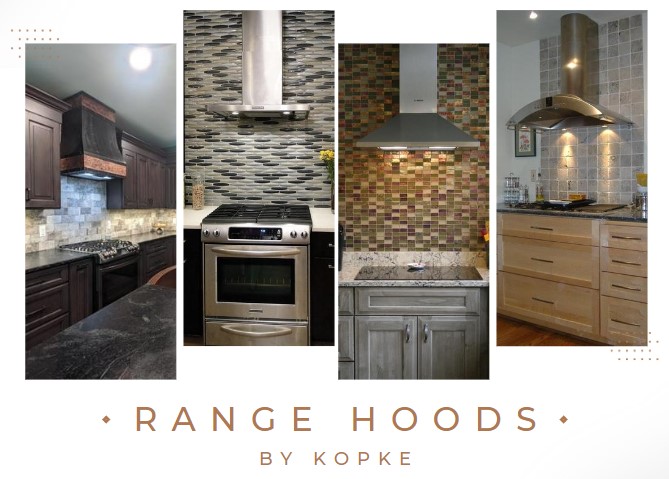In the kitchen and bathroom, it is widely known that proper ventilation is needed for the safety and health of your family and your home. In the bathroom, vent fans, and in the kitchen, range hoods, are included in nearly all present-day remodels. When bathrooms don’t have ventilation, steam builds up and not only does it make for annoying foggy mirrors, it can also lead to mold which can be both harmful and unsightly. When kitchens don’t have proper ventilation, specifically a range hood above the stove, steam and grease blanket your kitchen and the moisture and oils can settle on the cabinets causing them to warp and/or wreck. It has always seemed like an easy enough fix to just add a ventilation fan to suck the unwanted elements out of the home, but something you may never have thought of is: how is that air being replaced? That is what we call make-up air, the air that replaces the “bad” air that has gotten sucked out by a fan or range hood.
In the old days, homeowners were instructed to “open a window” when cooking, which allowed for fresh air to come in and fill the void. Also, homes were much less “air-tight”, or “energy-efficient”. Picture older homes that have air passing under the doorways, sometimes enough room to slide a thin package under. Also the windows were drafty, and you could hear a slight whoosh if you got near. In newer homes, doors have weather-stripping that seal out any airflow underneath, and windows are so tight you wonder how they were even able to fit them in the opening. These things are great for saving money on your energy bill, but did you know a tightly-sealed home can actually be dangerous?
When a range-hood is employed while cooking, it sucks air at variable rates, depending on the size and model of your unit. The rate that the air is sucked is measured in terms of CFM (cubic feet per minute). Think about it, that is quite a lot of air! Currently in Michigan, there is a code stating that if your range hood has a rating of 400 or more CFM, you must have a system in place to provide fresh make-up air. Without it, the air will try to replace itself, and if no fresh air is available (no window open), it will sometimes draw in exhaust from furnaces and water heaters (backdrafting).
A make-up air damper is what is recommended. This is a flap that lets fresh air in the home. Imagine a duct that goes from your kitchen to any exterior wall of the home. When the range hood turns on, it sends a signal to the damper, which opens up and lets in fresh air. When the range hood turns off, the damper flap closes. This is a way to ensure that there is no negative air pressure created when you use your exhaust fans.
This is a relatively new code, and so it is very likely that you either have no exhaust system at all, or you do have a range hood but no make-up air system. If you fall into the former category, you may want to consider installing such a system in your kitchen. This is what the National Kitchen and Bath Association has to say:
If you fall into the category of having a range hood but no make-up air system, you want to make sure that you have a window open while employing the fan. In Bathrooms, make-up air is not as big of an issue, because no bathroom fans that I know of run at 400 CFM, but you still may want to open a window if possible when running your fan.
When you are ready to remodel your kitchen or add a ventilation system, give us a call at (586) 777-6633!

